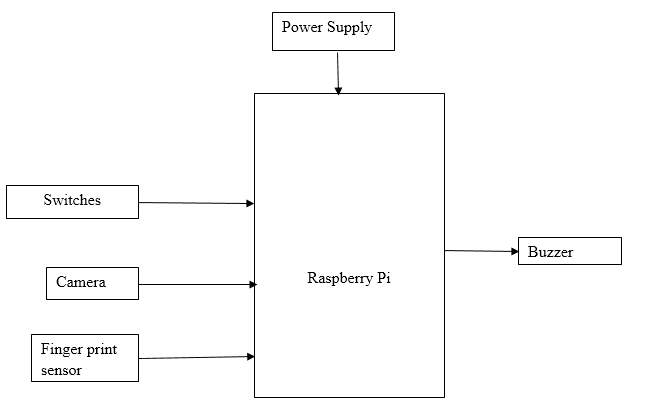Smart Electronic Voting Machine with Face Recognition using Raspberry Pi
Objective
The main objective of this project is to eliminate the fraudulent votes that are happening during the election procedure and to provide a highly secured data transfer to IOT which produces results who is in the lead for every minute after voting with the help of this smart EVM system.
Abstract
The main objective of this project is to eliminate
the fraudulent votes that are happening during the election procedure and to
provide a highly secured data transfer to IOT which produces results who is in
the lead for every minute after voting with the help of this smart EVM system.
Initially one have to verify their unique id and later their biometric
recognition. If incase any failure of validation occurs in the fingerprint
sensor, the camera will automatically enables for facial recognition. Once a user
voted and tries to vote again, a buzzer will gives an immediate alert.
Keywords: Raspberry Pi, web camera, Switch, Finger print sensor, Buzzer
NOTE: Without the concern of our team, please don't submit to the college. This Abstract varies based on student requirements.
Block Diagram

Specifications
- Raspberry pi
- Memory Card
- Web camera
- Switch
- Fingerprint sensor
- Buzzer
- Python3 IDLE
- NOOBS OS
- VNC Viewer
- Advanced IP Scanner
Learning Outcomes
- Raspberry pi pin diagram and architecture
- How to install NOOBS software
- Setting up and installation procedure for Raspberry Pi
- How to connect Raspberry Pi through VNC viewer
- Introduction to Python3 IDLE
- Commands in Python
- Basic coding in Python
- Working on web camera
- How to interface web camera with Raspberry Pi?
- Working on Switch
- How to interface Switch with Raspberry Pi?
- Working on Finger print sensor
- How to interface Finger print sensor with Raspberry Pi?
- Working on Buzzer
- How to interface Buzzer with Raspberry Pi?
- About Project Development Life Cycle:
- Planning and Requirement Gathering(Hardware components, etc.,)
- Hardware development and debugging
- Development of the Project and Output testing
- Practical exposure to:
- Hardware tools.
- Solution providing for real time problems.
- Working with team/ individual.
- Work on Creative ideas.
- Project development Skills
- Problem analyzing skills
- Problem solving skills
- Creativity and imaginary skills
- Testing skills
- presentation skills
- Thesis writing skills


 Paper Publishing
Paper Publishing
